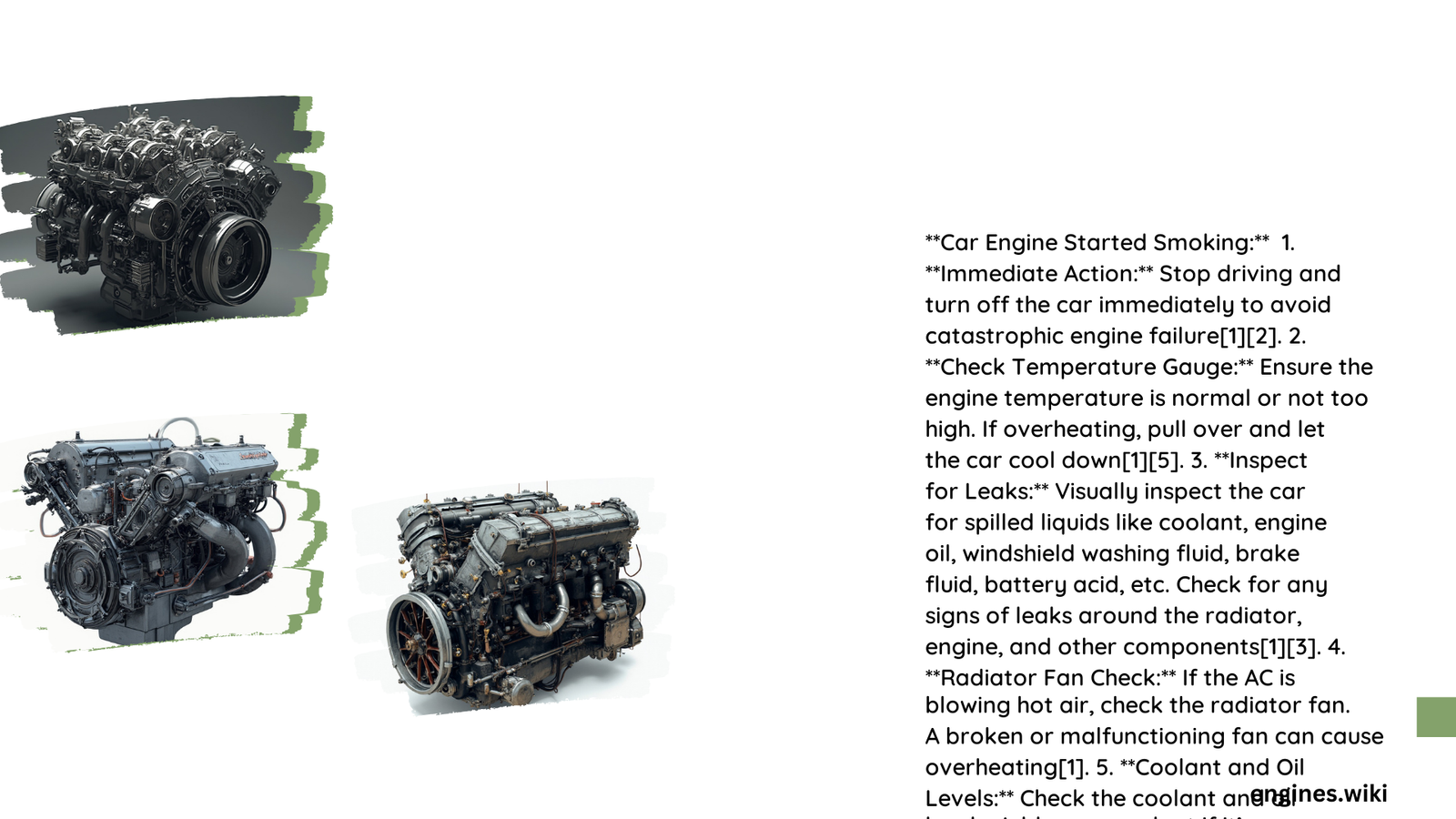When your car engine started smoking, it signals a potentially serious mechanical issue that demands immediate attention. Smoke emerging from your vehicle can indicate various problems ranging from minor oil leaks to significant engine component failures. Understanding the specific type, color, and context of the smoke is crucial for accurate diagnosis and preventing extensive damage to your vehicle’s engine system.
What Causes Smoke in Car Engines?
Why Do Oil Leaks Generate Smoke?
Oil leaks can create smoke when hot engine components come into contact with leaked oil. Here are primary mechanisms:
| Leak Location | Smoke Characteristics | Potential Damage |
|---|---|---|
| Valve Cover | Blue/Gray Smoke | Potential Gasket Degradation |
| Head Gasket | White/Blue Smoke | Significant Engine Wear |
| Piston Rings | Blue Smoke | Compression Loss |
| Crankshaft Seal | Burnt Oil Smell | Potential Lubrication Failure |
Critical Oil Leak Detection Strategies
- Visual Inspection
- Check for visible oil droplets under the vehicle
- Inspect engine compartment for oil residue
-
Look for dark, oily patches on engine components
-
Performance Monitoring
- Track oil consumption rates
- Monitor unusual burning smells
- Observe smoke color and consistency
What Are Symptoms of Serious Engine Smoke?
Color-Based Smoke Diagnostics
- Blue Smoke: Indicates oil burning within combustion chambers
- White Smoke: Suggests coolant leakage or head gasket failure
- Gray Smoke: Potential transmission fluid or excessive oil consumption
How Expensive Are Smoke-Related Repairs?
Repair costs vary significantly based on the underlying issue:
| Repair Type | Estimated Cost Range |
|---|---|
| Valve Cover Gasket | $200 – $500 |
| Head Gasket Replacement | $1,000 – $2,000 |
| Piston Ring Repair | $1,500 – $3,000 |
What Preventive Measures Can Minimize Smoke Issues?
- Regular oil changes
- Routine engine inspections
- Address minor leaks immediately
- Use high-quality engine lubricants
- Monitor engine temperature consistently
Expert Recommendations

Professional mechanics recommend:
– Immediate diagnostic assessment when smoke appears
– Never ignore persistent smoking
– Use specialized diagnostic tools
– Consider professional evaluation for complex issues
Technical Insights for Advanced Understanding
Smoke generation involves complex thermodynamic interactions between engine components. Factors like:
– Combustion chamber integrity
– Seal and gasket condition
– Oil viscosity
– Engine operating temperature
All contribute to potential smoke generation mechanisms.
Conclusion
Car engine started smoking requires systematic, methodical investigation. While some causes are minor, others can indicate severe mechanical problems. Prompt, professional diagnosis remains the most effective strategy for maintaining vehicle health and preventing costly repairs.
Pro Tip: Document smoke characteristics, frequency, and accompanying symptoms to assist mechanics in accurate diagnosis.
Warning Signs Requiring Immediate Attention
- Continuous smoke production
- Decreasing oil levels
- Unusual engine noises
- Reduced performance
- Warning light activation
Final Thoughts
Understanding your vehicle’s smoke signals can save significant time, money, and prevent potential catastrophic engine failure.
